VW ID. Buzz first drive: a classic with an electric twist
The classic VW Van has gone fully electric providing a step up from most SUVs in size and some great design

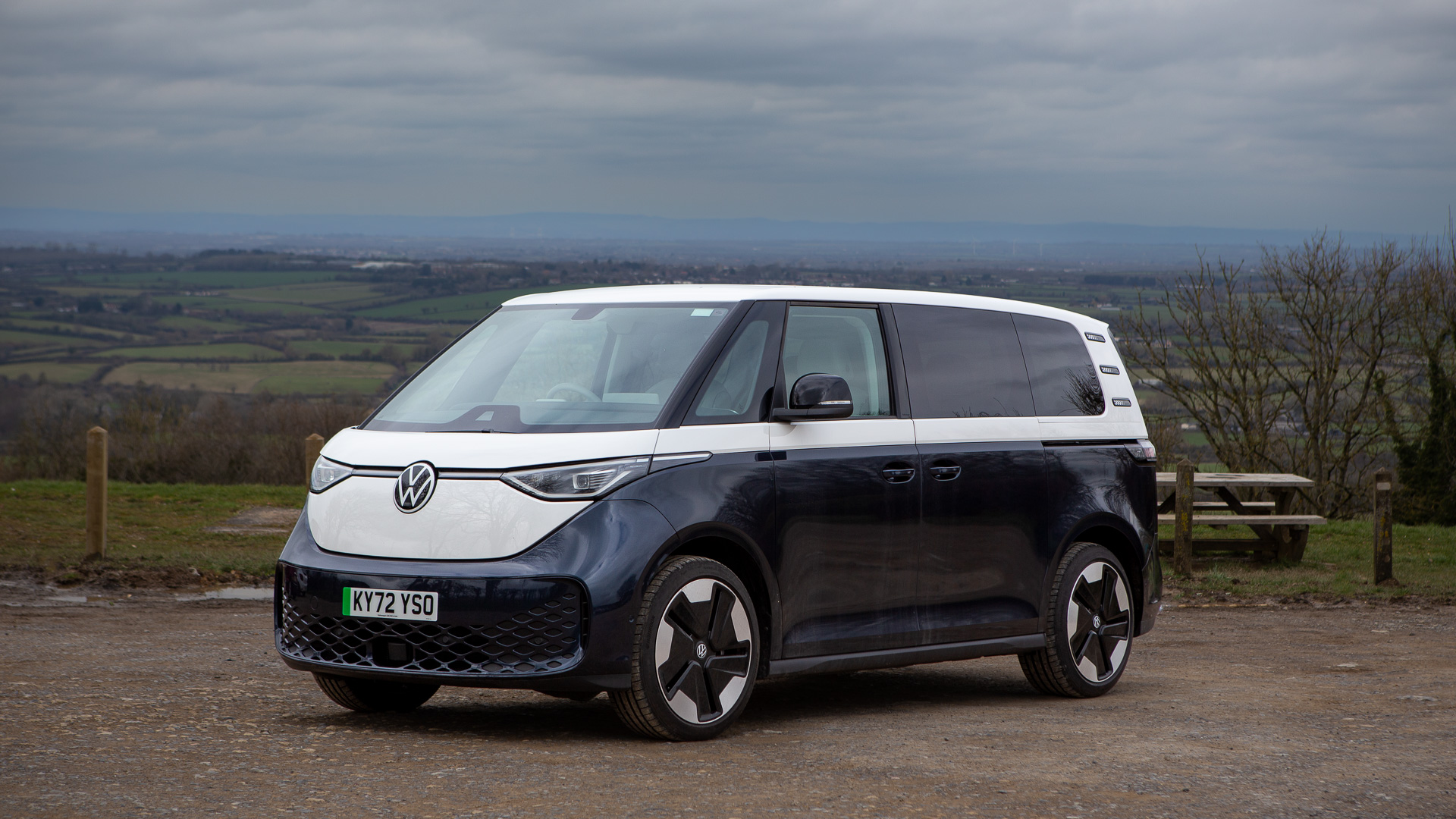
The VW ID. Buzz is a reimagining of a true classic that's both ultra-modern and faithful to the original. It gives more room inside than an SUV and feels great for driving long journeys. However, rear passenger luxury is limited and that range could be greater for those road trips.
-
+
Tons of space inside
-
+
Great upright driving position
-
+
One of the best smart cruise controls around
-
-
Rear seats only available in bench form
-
-
Real-world range feels a little short
-
-
Relatively high list price
Why you can trust T3

The VW ID. Buzz gets a lot of attention where ever it goes. That's because the design of this fully-electric people carrier is striking; with its two-tone paintwork and rounded bug-like features, it looks an awful lot like the original Type 2 VW vans of the 60s. Yet, there's also something extremely modern about the design.
It's a design technique that VW executed so successfully with the new Beetle when it launched in 1997 – modern yet still maintaining those classic looks. I was really excited when I saw the original concept for the ID. Buzz, and while the design has been normalised a little from that first prototype, it looks great in real life.
This is not an EV for everyone though. It's bigger than most SUVs to start with, and it has a rather large price tag to go with it. However, as electric microbuses go, they don't get cooler than the ID. Buzz. I spent a week behind the wheel to see what it was like to live with.
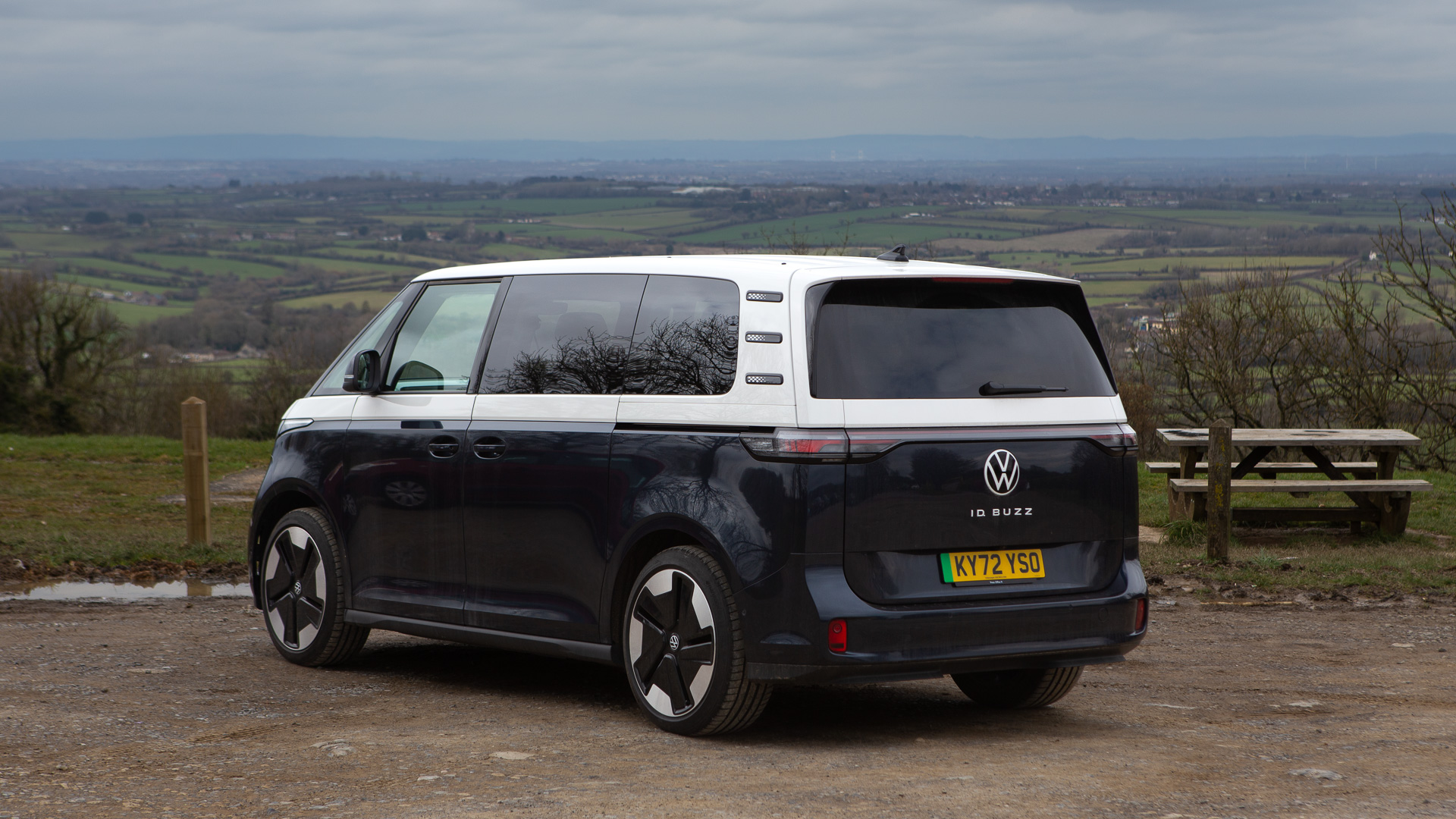
Price and availability of the VW ID. Buzz
The first of the VW ID. Buzz pre-sales were released to customers in October 2022, with full availability in early 2023. The van is available in two trims, the Buzz Life which starts at £58,915 and the premium Buzz Style which starts from £63,715.
That is significantly cheaper than the Mercedes EQV 7-seater van but a step up from mid-sized SUVs such as the Skoda Enyaq iV 80 and VW's own ID. 5 electric SUV. So in electric terms, it's probably about right. It just sounds like a lot to spend on a van. Especially when the VW Multivan, which also comes in plug-in hybrid form, starts from just £43,720 (£49,345 for the eHybrid).
This isn't just an engine swap from the VW Multivan though, the ID. Buzz is a completely new vehicle and it's so much better in many ways.

Design and features
The VW ID. Buzz manages to pull off looking very modern, while also following the stylings of that original 60s wagon. This is particularly true when finished in the two-tone paint, as that dividing line and its swoop down the bonnet mirrors the original. In a plain one-colour finish, the van looks much more ordinary.
Get all the latest news, reviews, deals and buying guides on gorgeous tech, home and active products from the T3 experts
The model I tested was finished in Candy White and Starlight Blue, though the two-tone is also available with green, orange or yellow. The ID. Buzz catches people's eyes wherever it goes and it's not unusual to see people smiling and waving at the car as you pass. Anything that has that effect on people has to be a good thing.
This is a big vehicle, something that you notice the second you open the door and have to step up into the cabin. While it's tall (1,936mm) it's actually shorter than most large SUVs at 4,712mm, thanks to the stubby front. That's noticeable when putting it in regular UK parking spaces, and thanks to a decent turning circle, it's easy to manoeuvre. The rear has sliding doors on both sides, which gives it that van feel, even though there's only one row of rear seats.
In the cabin, the Buzz looks very modern and quite minimalist. There's a 10-inch display behind the steering wheel and a 12-inch screen in the centre. There's a couple of touch sliders below the centre screen for temperature and music volume, plus buttons for parking, climate, hazards, assist and driving mode. The drive selector, as with other ID models, is on the right-hand stick of the steering wheel, leaving the area between the seats clear. In fact, the cargo version of the ID. Buzz comes with a bench-like 2+1 seat in the front.
Here in the regular ID. Buzz though, you get two very comfortable chairs, both with two armrests and lots of electric adjustment. This combined with the raised driving position and the large windscreen gives you a really clear view of the road or any obstacles.
The rear seats are a little more basic, offering that 2+1 split for folding down, and with such a large rear boot space, it's a shame there isn't the option for another row of seats to make it a 7-seater. I'm sure there will be more variations coming, but I'd love to see a version with two arm chairs in the back like some of the fancier people carriers.
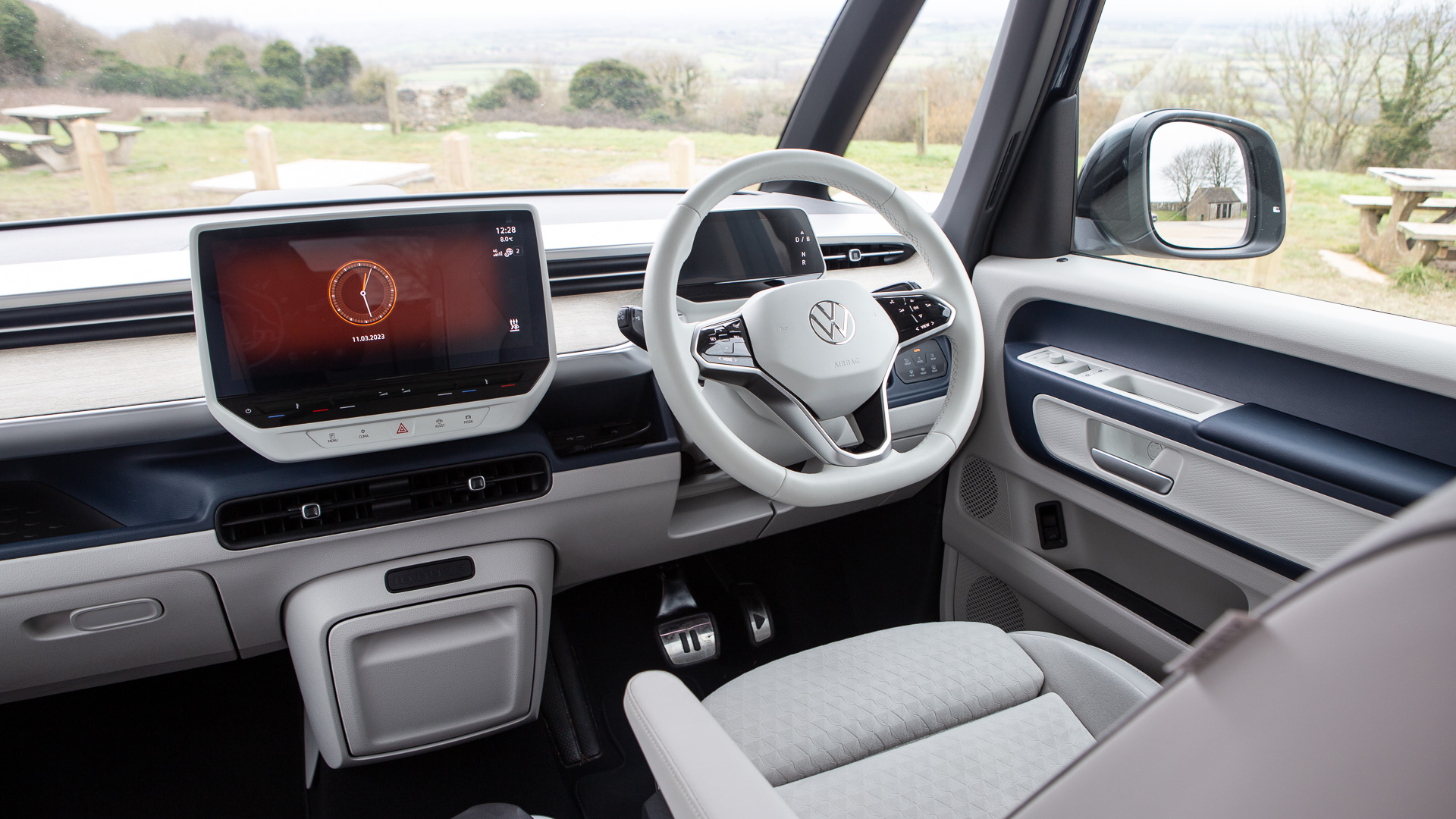
As you might expect from a new electric car, there's plenty of tech in the ID. Buzz. The infotainment system is VW's own ID. Software 3.0 and includes everything from the steering wheel heater to the navigation. It's very visual and icon driven, making it easy to navigate, though you can also connect your phone to use either Android Auto or Apple CarPlay instead.
There's a data SIM built into the system (part of the Discover Pro package) to provide over-the-air updates and navigation data. The advanced driving features include Park Assist Plus, which can search for spaces and parallel park for you – and get you out again. There's autonomous emergency braking with pedestrian and cyclist monitoring, and a speed limiter.
The adaptive cruise control might be a fairly standard feature on modern cars but I really like how the ID system works. As well as setting the maximum speed for your travel, which automatically adjusts with road data, it will also slow you down when there's a significant bend in the road. This meant that through winding country roads, the Buzz often dropped down from the full 50 or 60mph speed limit to something that felt safer around tight bends. It meant that I rarely had to take the car out of cruise control at all.
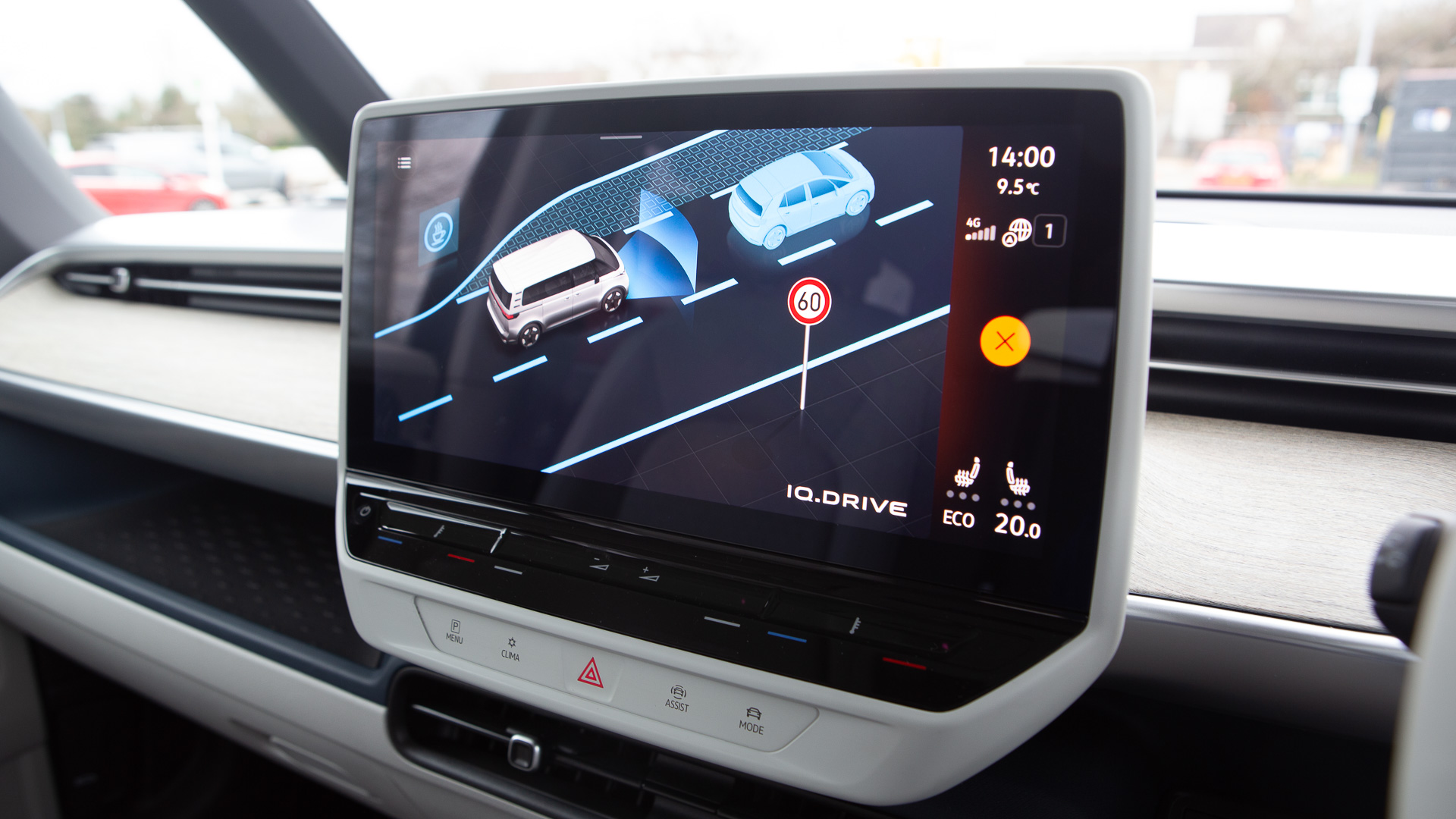
Performance and driving
The ID. Buzz is definitely most at home on the open road and is the kind of vehicle I'd love to do a long road trip in. However, the WLTP range figure for combined usage is 251 miles. For highway driving alone, that's going to be more like 180 miles, and less still in cold weather. That's because the Buzz features the same 77kWh battery as in the ID. 3 and ID. 5, despite being a bigger beast. I'd love to see a long-range version of the ID. Buzz with a larger battery to push that combined range over 300 miles and make it suited for those longer journeys.
For city driving though, the Buzz is great and is incredibly pokey. Other drivers I think seemed a little shocked at how fast this thing goes from a cold start, and will really fly when you put your foot down. The official figures are 204 metric horsepower (PS) and 310 nm of torque. That's a 0-62 of 10.2 seconds – in a van!
The battery will charge at up to 170kw DC, which means fast charging in around 30 minutes from 50 to 80%, which isn't bad. Though, that does involve finding a charger that can deliver those speeds. For home charging at 11kw it's around 7.5 hours from 0-100%.
Overall, the Buzz is a very easy and pleasant vehicle to drive, wherever you're going. Despite being on the larger size, it was easy to manoeuvre around the city. I also had the experience from the passenger seat of the ID. Buzz in Germany this week, and the experience was just as positive. Even sitting on the rear bench seat, the higher position and large windows make it a fun drive.
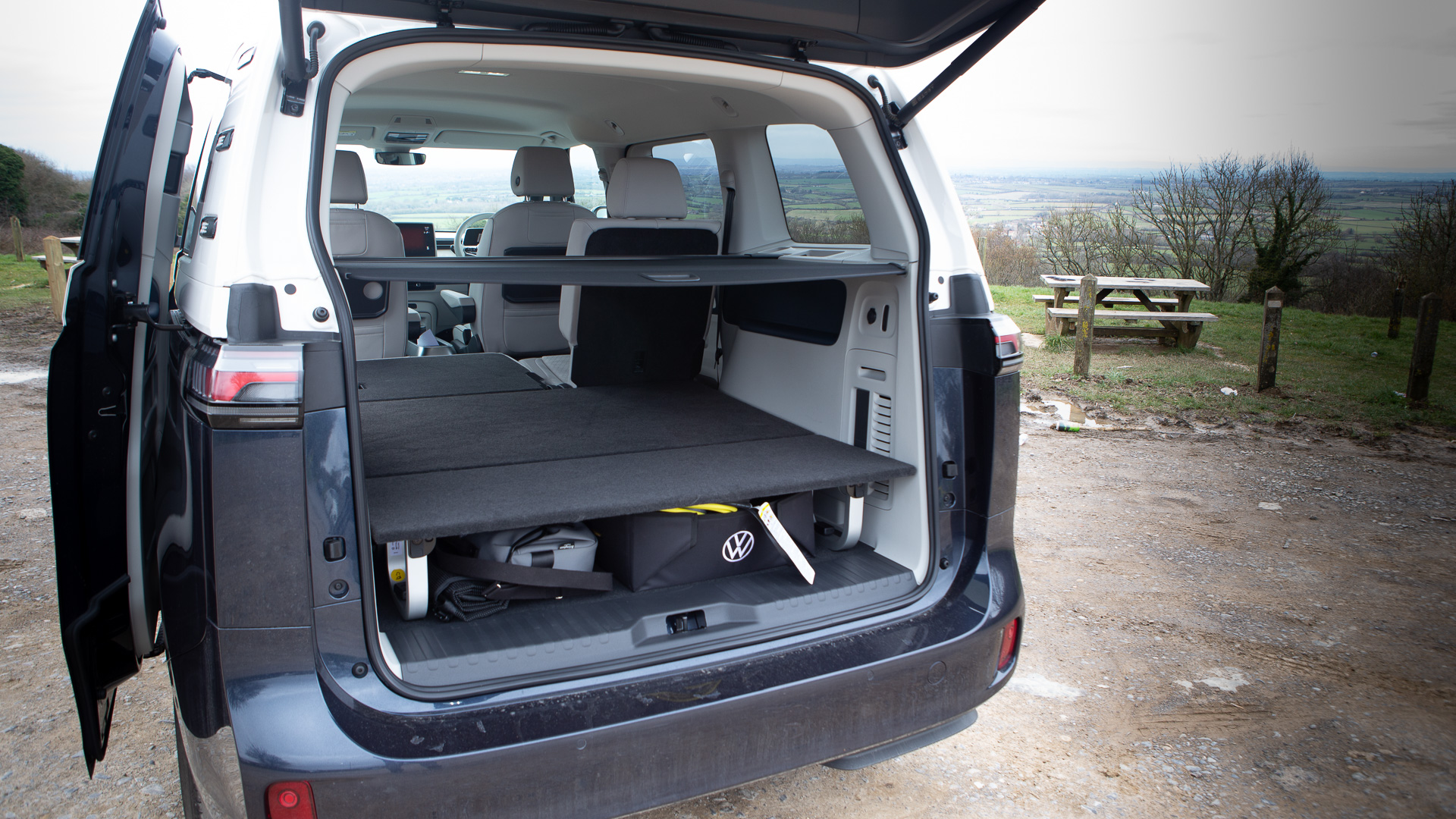
Generous boot space in the ID. Buzz
Should I buy a VW ID. Buzz?
This type of vehicle – call it a Microbus, people carrier or van – isn't for everyone but if you are looking for something of this size, the ID. Buzz is an incredibly fun option. The large boot space means there's lots of room for luggage, making it ideal for families, but I think this could also be a great replacement for a gigging band on the road, cyclists or anyone carrying tons of sporting equipment.
I really can't wait to see a camper version of the ID. Buzz, which has to be in the works. And as I mentioned before, a 7-seater and a long-range battery version would also be on my wish list.
For now, though, there's no denying that this is the best-looking electric van/microbus on the market. It will make you smile to drive it, and it makes other people smile when they see it. If you're mostly driving in the city or in urban areas, the range won't be an issue for you and the power it delivers when you put your foot down makes it very responsive.
Also consider these cars
If you're looking for an electric car with a bit more room, there are a number of large SUV models that would suit. Skoda's Enyaq iV 80 is a relatively affordable option, starting from just over £42,000, while Audi's Q4 e-tron starts from £50,625 and BMW's iX kicks off at £69,905. VW also has its ID. 7 coming soon. This large SUV was part revealed at CES back in January, with more details expected soon.
Of course, there's also the VW Multivan, which in its eHybrid form, starts from £49,345. That gives you the benefit of up to 37 miles of plug-in electric range for city driving and then a 1.4-litre engine for longer journeys.
As T3's Editor-in-Chief, Mat Gallagher has his finger on the pulse for the latest advances in technology. He has written about technology since 2003 and after stints in Beijing, Hong Kong and Chicago is now based in the UK. He’s a true lover of gadgets, but especially anything that involves cameras, Apple, electric cars, musical instruments or travel.
